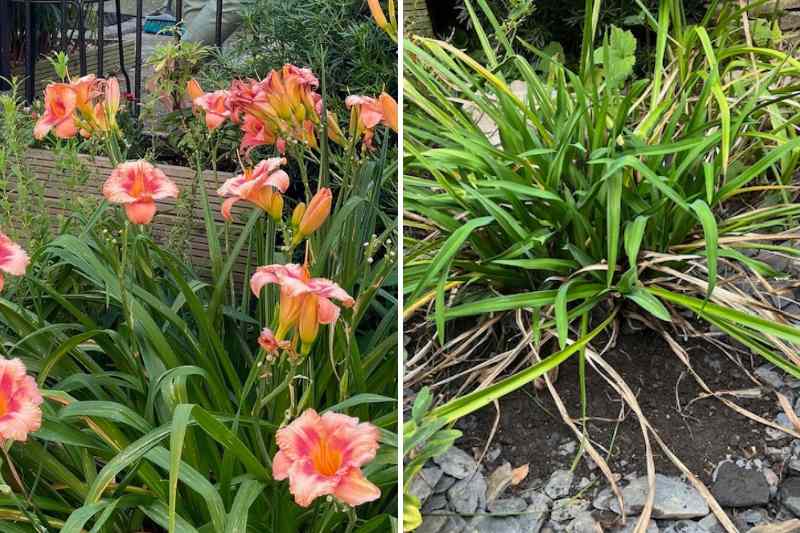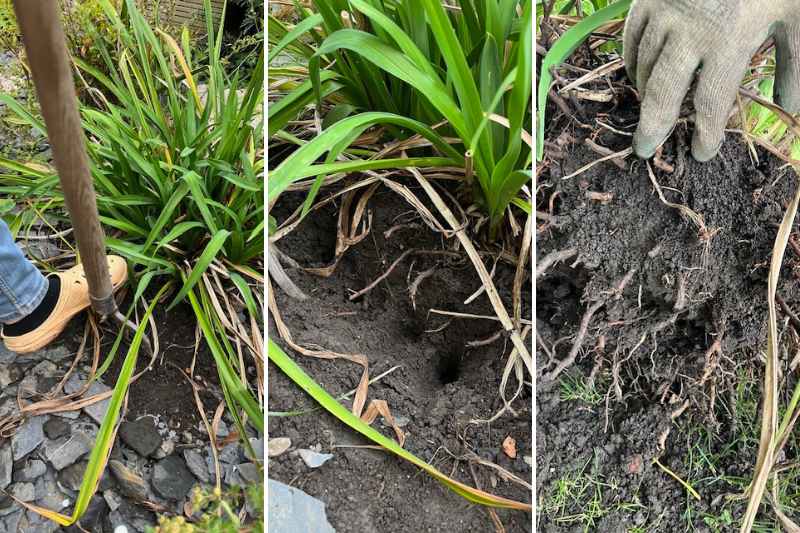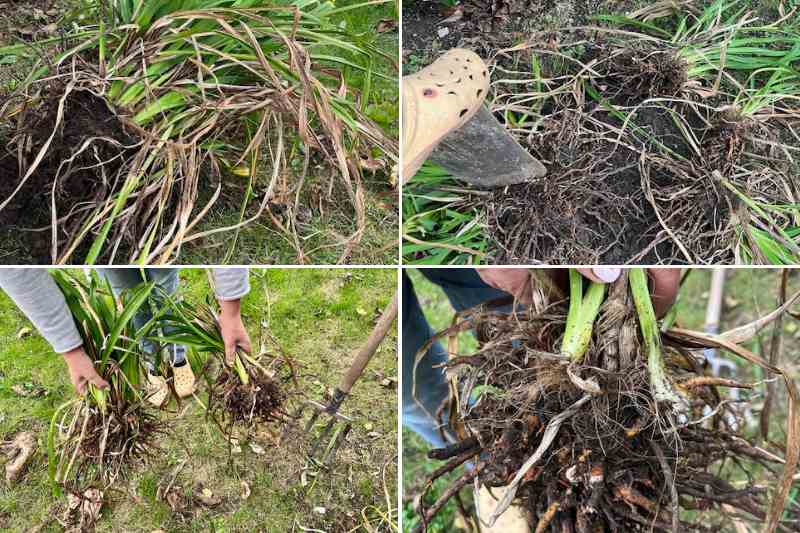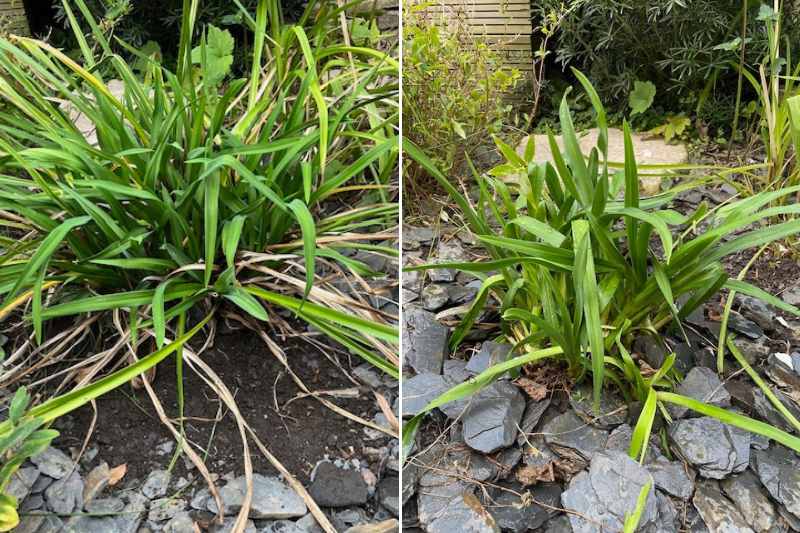With their small lily-like corollas, the daylilies (Hemerocallis) have undeniable charm and fit easily into any perennial border. Showing every shade of yellow, orange, red and brown, the range of daylilies has greatly expanded thanks to hybridization, notably in the pinks palette. Horticultural varieties, increasingly numerous, also offer flowers, single or double, in different shapes, with petals more or less wide, sometimes undulate or crumpled.
Renowned for robustness and ease of cultivation, daylilies quickly form opulent clumps when happy in their spot. At the risk of taking up a little too much space, to the detriment of other species. That is why, every 3 to 5 years, dividing daylily clumps is necessary. Discover all our tips to divide your finest daylilies.
To learn more : Daylily: planting, cultivation, division and maintenance
Why divide daylilies?
Dividing a daylily clump fulfils several purposes. To begin with, the desire to multiply that young plant you love so much for the colour or shape of its flowers, renewed daily, for its hardiness, for its ease of cultivation… Indeed, by dividing a clump you will obtain new young plants, perfectly identical to the mother young plant, which you can plant elsewhere in your garden. Or better still give to friends and fellow gardeners. It is therefore a very economical way to multiply a daylily.
One may also decide to divide daylilies because they become clearly too invasive. Each year, the stump, made up of fleshy, tuberous and very vigorous roots, gets larger and the clumps of foliage become substantial. Too much so at times, as they can smother neighbouring perennials.

Dividing a daylily sometimes becomes essential when the young plant ages. Although possessing good longevity of around ten years, the daylily can tire. Concretely, flowering becomes more discreet and the plant shows signs of decline. Division will give it renewed vigour.
Finally, dividing a young plant of daylily helps ensure its good health. By dividing the clump, foliage is aerated, which helps reduce the appearance of potential diseases.
When to divide daylilies?
Division of daylilies is best carried out in autumn, from September until the first frosts, in October or November depending on region. If you live where winters are severe, act at the end of summer, in September, to allow divided daylilies to establish well before the first cold snaps.

Division can also be done in spring, when the first shoots begin to emerge. But take care that they do not suffer too much from heat.
How to divide daylilies?
- Cut leaves to 20 or 30 cm from soil and remove spent flower stalks if you have not already done so. For this operation, use a cleaned, disinfected pruning shear. If dividing in spring, this pruning is of course unnecessary
- Water your daylily clump if soil shows signs of dryness
- To lift the stump, push a garden fork in 20 cm from the crown and work round it. Each time the tool is pushed in, use a back-and-forth motion to lever the young plant out of the soil. It is preferable to use a garden fork rather than a spade, which may cut the roots
- Place the stump on the ground and try to remove as much soil as possible to access the roots. For this, you can use a jet of water to help
- Divide by separating the clump into several sections, either by hand, with a gardening knife, or with the garden fork for the largest clumps
- Prepare soil for replanting the different fragments. Dig a hole deep enough, loosen the base and create a slight mound so the pieces sit at same depth as the mother young plant. Then place the new young plants of daylily, spreading out the roots
- Backfill the hole with the removed soil, firm with your hands and water abundantly.

How to care for young daylily plants after division?
In the weeks following transplanting the new young plants of daylily, careful watering is essential. Water regularly but not excessively to avoid root rot. That is why, before watering, check soil moisture with a finger.
If you divided in autumn, the weather may be sufficient. You should also stop watering at first frosts and during winter. Applying a thick mulch will protect the stump from cold.
If division was done in spring, watering continues through summer. Adding mulch can be considered to retain moisture and reduce watering frequency.

And if you want to give away some plants?
If you want to offer some sections of daylily to a friend, temporarily pot them in a container filled with compost. They can remain there until spring provided they receive minimal watering.
































Comments